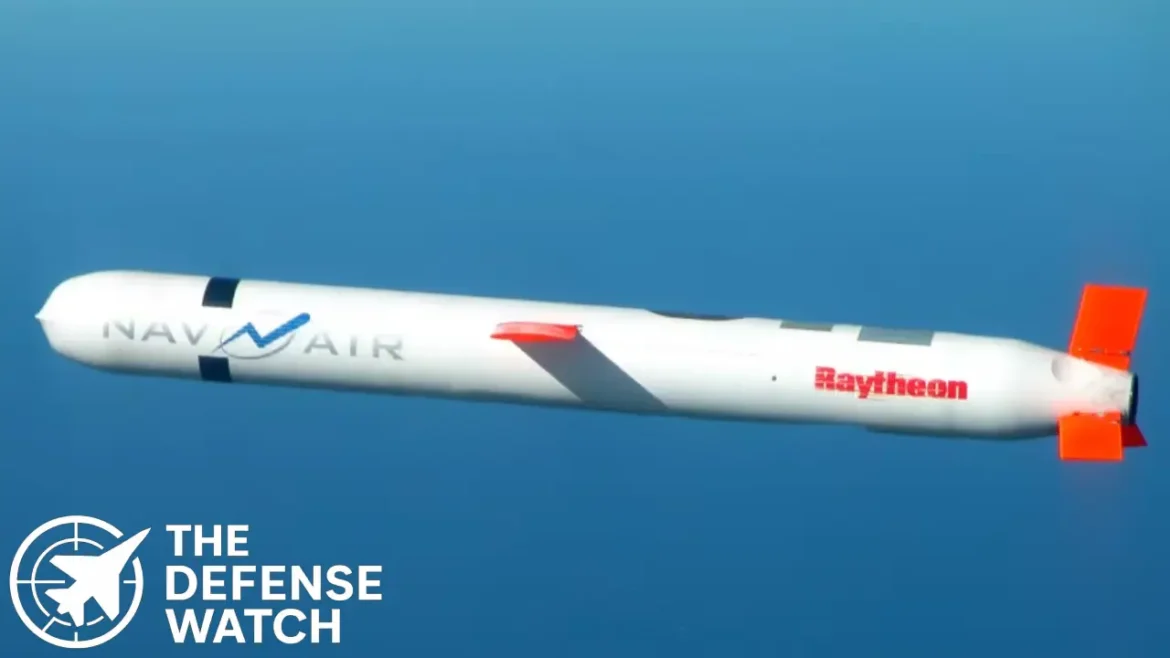Background: The Tomahawk cruise missile debate and Ukraine’s request
Ukraine has for months pressed its key backer, the United States, to provide the Tomahawk long-range cruise missile system to expand its capability to strike deep inside Russian territory. In recent weeks, U.S. officials and media sources confirmed that while the Tomahawk remains one of the most capable deep-strike weapons in the U.S. inventory, its transfer to Kyiv is unlikely at this time.
According to analysis by the Center for Strategic and International Studies (CSIS), the U.S. arsenal of Tomahawks numbers around 1,000 missiles available for transfer — though many are committed to the U.S. Navy’s force structure.
Additionally, Russia has vocally warned that supplying Tomahawks to Ukraine would trigger “a whole new level of escalation.”
Why the U.S. says “no” for now: Inventory, training and strategic prioritisation
Inventory and commitments
One of the key obstacles is the limited production and availability of Tomahawks. According to Reuters, the U.S. Navy plans to procure only 57 Tomahawks in 2026, and many of the existing missiles are already allocated to U.S. force posture in the Pacific and other regions.
CSIS estimates that although around 1,000 missiles could be made available for Ukraine, diverting large numbers would strain U.S. operational readiness in other theatres.
Training and operational complexity
Even if the missiles were supplied, the U.S. views the training and integration burden as significant. The weapons system is complex, and the U.S. military regards itself as the only fully trained operator in major numbers. Some U.S. commentary suggests that a six-month to one-year learning curve would be required for a foreign operator to employ Tomahawks independently.
Strategic priorities and escalation risk
The U.S. is also balancing its global defence priorities — including the Indo-Pacific — and views Ukraine’s long-range strike capability through a lens of escalation risk with Russia. Moscow has made clear that Tomahawk transfers would provoke a new stage of confrontation.
As a practical alternative, the U.S. is said to be exploring the supply of shorter-range strike weapons through allied channels rather than direct Tomahawk transfers.
Analysis: Implications for U.S. Defence and Global Security
The decision not to provide Tomahawks to Ukraine at this time carries multiple ramifications:
U.S. force posture and munitions supply chain
Keeping Tomahawks locked within U.S. inventory underscores how scarce high-end precision strike munitions are — even for an advanced military power. The limited annual procurement rate (less than 100 missiles per year) means that large transfers undermine reload capability and forward posture, especially given the missile’s role in the Indo-Pacific pivot.
This highlights a broader challenge for the U.S. defence industrial base: scaling production of long-range precision munitions to meet both alliance commitments and peer-competitor deterrence demands.
Ukraine’s war-fighting strategy
For Kyiv, the denial of Tomahawks narrows one potential avenue to strike deep into Russian rear areas or critical infrastructure. Analysts at CSIS argue that while a few dozens of Tomahawks might not change the war on their own, supplies on the order of hundreds might shift leverage.
Without them, Ukraine will continue to rely on shorter-range missile systems, existing Western-supplied artillery rockets, and tactical counter-battery operations. This may limit Kyiv’s ability to impose direct costs on Russian logistics hubs far from the front line.
Escalation dynamics and deterrence
From a global security viewpoint, the U.S. decision reflects caution about escalation management. Supplying very long-range strike weapons into a major great-power conflict zone could open risks of mis-calculation, particularly given Russia’s repeated warnings. Upholding that restraint may help avoid a rapid spiral into a broader confrontation.
At the same time, this may embolden Russia’s calculus in Ukraine by reducing the deterrent penalty for deep-strike attacks. The intensification of Russian strikes on Ukraine’s energy infrastructure — coinciding with the Tomahawk discussion — suggests that Moscow is betting on a war of attrition rather than direct counter-attacks.
Technology and long-range strike trend
The Tomahawk debate also feeds into the broader technological trend in defence: the increasing importance of standoff precision strike, multi-domain launch networks (ground, sea, subs), and the integration of sensors and command links. The U.S. Marine Corps ground-based variant of Tomahawk (Block V) and the Army’s “Typhon” launch system suggest the evolution of cruise missiles beyond just naval platforms.
For the U.S., prioritising long-range cruise missiles and hypersonics emerges as a core capability in great-power competition. The Ukraine conflict thus becomes a pivot point: how much U.S. munitions are diverted from peer-competitor deterrence to proxy war support?
Conclusion and Forward Outlook
While the U.S.’s decision not to deliver Tomahawks to Ukraine reflects current inventory constraints, strategic calculus, and escalation concerns, the debate is likely far from over. As the war in Ukraine persists, Kyiv’s allies may circle back to revisit long‐range strike options – either through allied transfer mechanisms or new U.S. production ramp-ups.
For the U.S. defence sector, the pressure builds to increase procurement of next-generation long-range precision munitions to satisfy ally needs without sacrificing great-power readiness. As Washington balances support for Ukraine with its Indo-Pacific priorities, the question remains: how many high-end missiles can it afford to supply — and how will that shape the future of deep-strike capability and deterrence in the 21st century.


12 comments
[…] the Gripen remains a cornerstone of modern airpower for middle-sized air forces worldwide. As global security challenges evolve, this Swedish-made fighter continues to prove that agility and intelligence can […]
[…] the U.S. military pivots back toward peer conflict in the Indo-Pacific, the integration of SEALs with submarine […]
[…] Hegseth’s communication policy reflects an administration intent on tight message control amid complex global security challenges. Yet, how this policy is implemented—and whether it evolves under congressional […]
[…] The new framework reflects Washington’s recognition of India as a key pillar of its Indo-Pacific defense strategy and a counterweight to China’s growing […]
[…] 9,700 tons, the destroyer features vertical launch cells for Standard Missiles (SM-2, SM-6), Tomahawk Land Attack Missiles, and Evolved Sea Sparrow Missiles (ESSM). Its Ballistic Missile Defense (BMD) role has been […]
[…] and South China Seas. The nation’s Maritime Self-Defense Force (JMSDF) has been upgrading its missile inventory to counter potential threats from hostile vessels and aircraft. This AI-driven initiative […]
[…] transatlantic community and the rules-based international order. We will not allow it to succeed. Ukraine’s security is directly connected to […]
[…] As deployment continues, its operational integration will be closely watched by regional and global security […]
[…] Supplying interceptors and batteries to Ukraine […]
[…] a global security perspective, the incident reflects the shifting nature of modern warfare—where high-value assets […]
[…] plant once supplied nearly 20% of Ukraine’s electricity, making it both a symbolic and strategic […]
[…] alignment between the two allies and Tokyo’s willingness to support broader regional and global security […]